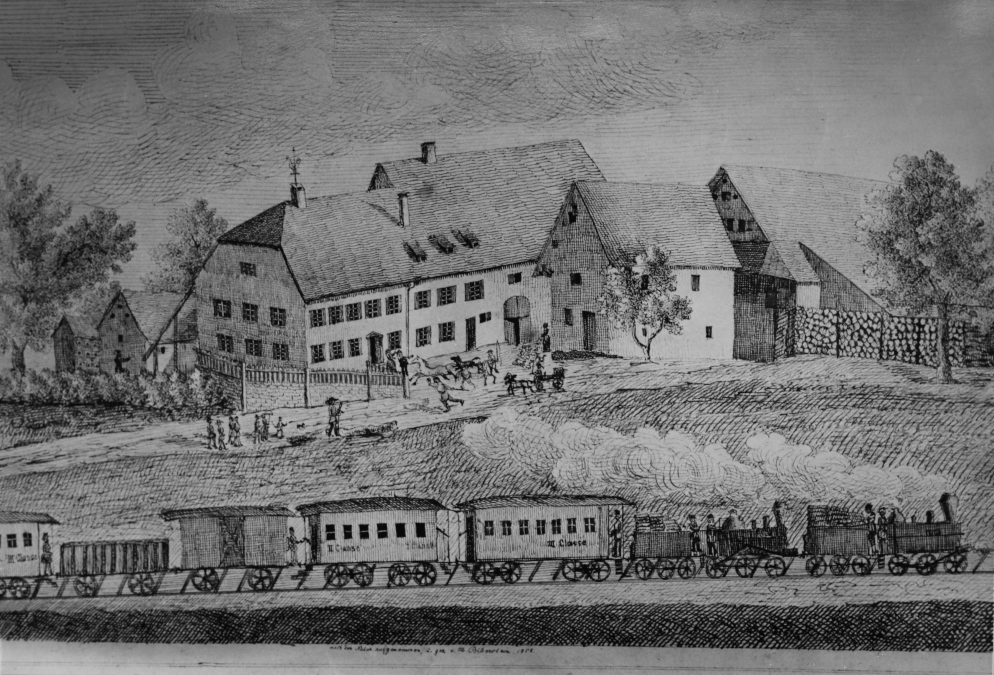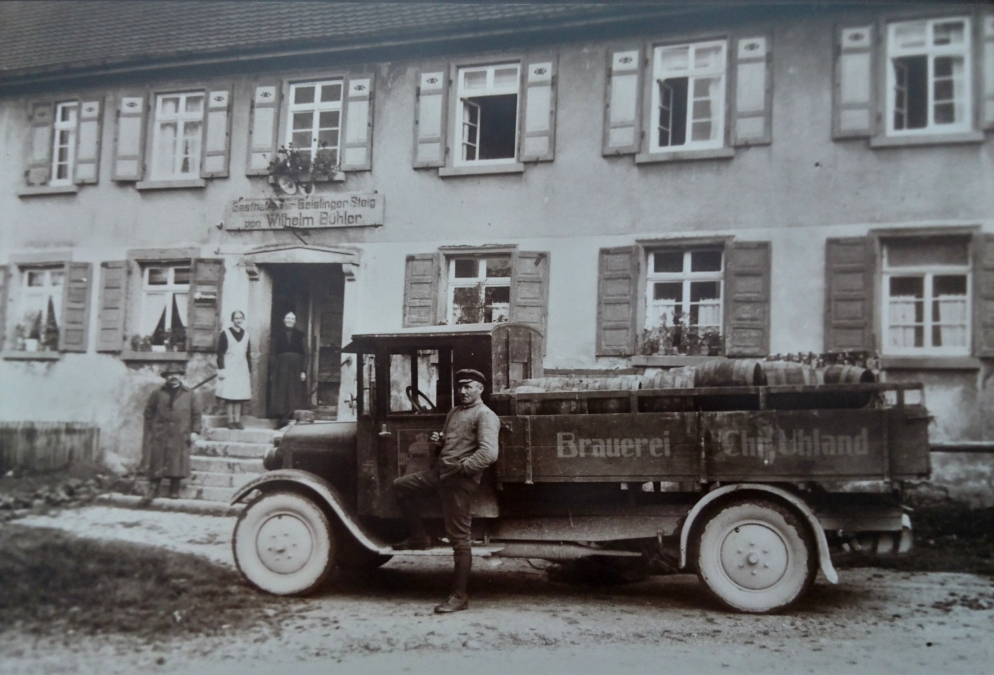The origin of the Ziegelhütte
The Ziegelhütte Inn is located on the property of the eponymous Ziegelhütte and is situated at the southernmost tip of the Geislingen district, directly at the head of the Geislinger Steige. This small hamlet on the border of the Alb-Donau district or rather the municipality of Amstetten was first documented around 1500, but the exact date of construction is unknown. The brickworks that already existed at that time and which produced quicklime, bricks, and roof tiles for centuries until 1913, is still the eponym not only to the property but also to the adjacent Ziegelwald (brick forest). Only one roof tile with the sign L. H. (Leonhard Hauff) 1823 and the Württemberg deer antlers remains as a reminder of the brickworks' heyday.
The agricultural Farm
With the construction of an agricultural farm around 1700, the former owner created a second source of income, which was continually expanded and adapted to the spirit of the time. While the Ziegelhütte was owned by Karl Bühler and then by his son Wilhelm Bühler, the agricultural business was the main focus. However, the extensive farming and arable farming that had been carried out until then was discontinued in 2019. Only the free-range chickens and rooster still cause quite a stir among young and old.
Historically important Location
Due to the location of the Ziegelhütte, its history is also directly linked to that of the Geislinger Steige. During the construction of the railway line over the Steige, workers were housed in barracks here, and a food distribution point was also set up for them there. For 300 years until 1805, the postal carriages of the Imperial Postmaster Prince of Thurn and Taxis drove past the property or rested there on the historic Geislingen - Ulm route. At that time, the horses in the Ziegelhütte stables were also needed as draft horses on the Geislinger Steige. This ended when the first steam train conquered the slopes in 1850.
Also of historical importance is the suspected Roman road near the Ziegelhütte, which led over the Albsteige towards the Filstal valley. In 1846, for example, foundations of old buildings were discovered nearby in the Ziegelwald.
The Inn
The restaurant itself is located on the ground floor of the old farmhouse and was opened around 1800. The history of the house also includes an arson attack in 1870, which resulted in the reconstruction of the upper floor. The addition of a hall around 1930, in which dance events and weddings took place, was also an important step for the restaurant. An old organ provided good entertainment back then, something some of the older guests still report with joy today.
By the way, until the end of the war the restaurant was called “Gasthaus zur Geislinger Steig”. This name was incorporated into today’s logo. This name can also be seen in the old photo, when the Ziegelhütte was owned by Wilhelm Bühler, the first Bühler at the Ziegelhütte and father of Karl Bühler. Since then, the small and cozy restaurant with beer garden has been run by the Bühler family. In 2022, Simone Bühler took over from her father, Wilhelm. With the support of the family, she is now the fourth generation to run the restaurant as a stand-alone business. The entire old building is currently undergoing extensive renovation and refurbishment, ensuring the continued existence of the restaurant and continuing the property’s tradition.

